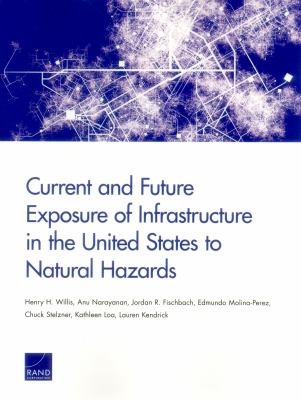
Book
|
Current and future exposure of infrastructure in the United States to natural hazards
Copies
1 Total copies, 1 Copies are in,
0 Copies are out.
Title
Current and future exposure of infrastructure in the United States to natural hazards
Digital Link
Authors
Subjects
Language
English
Published
Santa Monica, CA : Rand Corporation, [2016].
Publication Desc
xv, 40 pages : color maps ;
ISBN
9780833095008
(paperback)
Series
Dimensions
28 cm.









